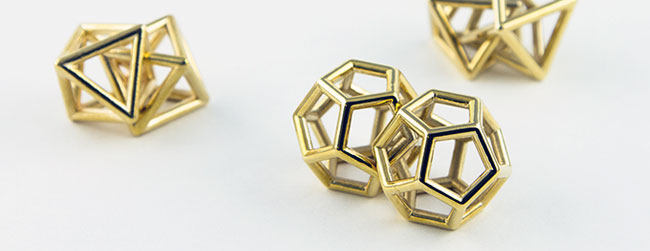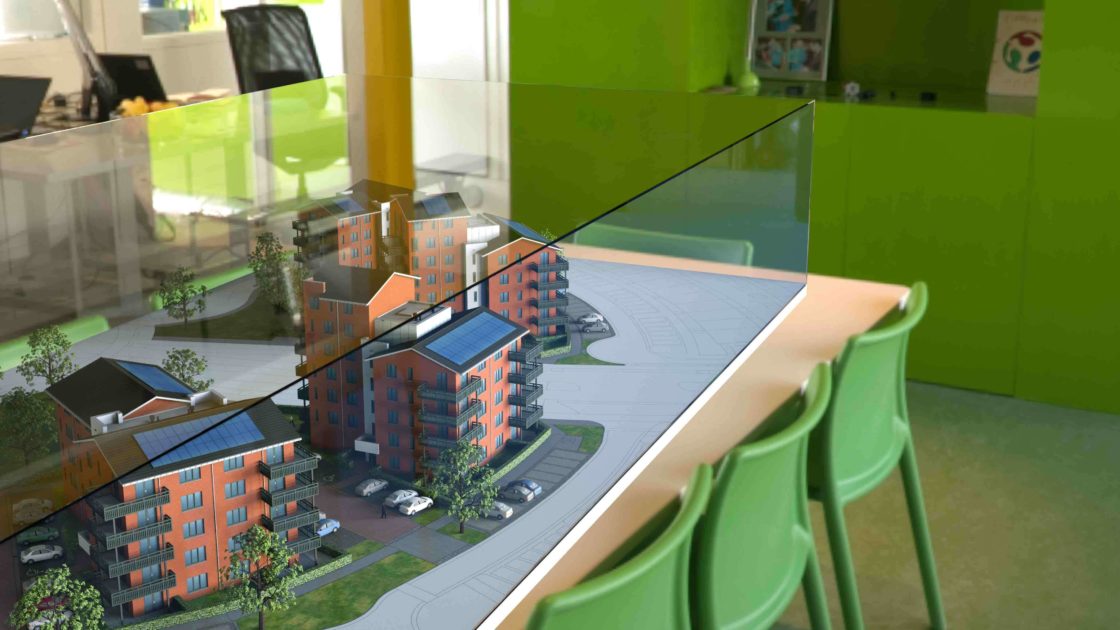
Additive manufacturing continues to develop–and thrive as an industry recognized for groundbreaking technology and innovative products. Expected to grow at a compound annual growth rate of 20.8% from 2022 to 2030, shipments of 3D printed products are projected to reach 21.5 million units by the end of that time period.
While prototyping has led the market, accounting for over half of 3D printing global revenue in 2021, research shows that the “functional parts segment is expected to expand at a significant CAGR of 21.4% from 2022 to 2030.” Additive manufacturing with metal materials is expected to continue trending, and projected to expand more extensively than any other segment.
Whether you are creating signature pieces or designing high-performance parts, the key to success is aligning the correct additive manufacturing materials with your design and application. Shapeways makes this easy with 3D printability analysis, available as soon as you upload a 3D model. Preparing ahead of time and becoming educated on materials and technology, however, can make the design and manufacturing process easier.
Following is information about popular additive manufacturing materials from Shapeways, including information about corresponding technology, available colors, and finishes.
Metal Additive Manufacturing Materials
Metal 3D printing continues to be one of the hottest trends, allowing for extremely strong parts that are also lightweight. Metal materials are in high demand for additive manufacturing applications like automotive, aerospace, and drone technology. At Shapeways, the jewelry sector continues to flourish via Wax Casting with precious metals too, accompanied by 3D printed molds.
A large percentage of metal powders can be recycled, lending sustainability to additive manufacturing for metal as well as the industry overall. For materials like Stainless Steel 316L, 3D printed with Binder Jetting, metal parts make up only seven to ten percent of most builds, allowing for all the remaining metal 3D printing powder to be sifted and reintroduced with virgin powder.
Shapeways offers a variety of metal additive manufacturing materials, to include:
- Aluminum – Recommended for additive manufacturing applications that require strength, a lightweight nature, and high precision, Shapeways 3D prints Aluminum parts with Selective Laser Melting. SLM 3D printing is known for the ability to create highly customized, sophisticated parts with intricate details. Shapeways customers rely on Aluminum for stiffness, accuracy, and high thermal conductivity for making functional parts and tools.
- Gold, Platinum, Silver and other precious metals – Shapeways offers a variety of products in precious metals via Lost Wax Casting. Molds are 3D printed for metal casting with high quality materials for applications like jewelry. Materials like Copper are highlighted for other products like marine accessories, mechanical devices like heat exchanges, home decor, and prototypes.
- Stainless Steel 316L – A single metal alloy, Stainless Steel 316L is composed of 100% Stainless Steel. Recommended for industrial products like mechanical machinery or surgical tooling, this metal additive manufacturing material is resistant to corrosion as well as extreme temperatures. Stainless Steel 316L is 3D printed with Binder Jetting technology, known for speed, and accuracy and repeatability in metal parts.
- Stainless Steel 17-4 PH – Also 3D printed with Binder Jetting, Stainless Steel 17-4 PH yields highly durable parts with excellent resolution and strong material properties. This metal additive manufacturing material is recommended for mechanical applications, medical applications requiring devices like surgical tooling, exchangers, fasteners, and more.
- Steel – This metal material is composed of 40% bronze and 60% steel, with color ranges from silver gray to reddish bronze. Steel is a strong material, recommended for small and large consumer products. This material is also 3D printed with Binder Jetting technology.

Nylon Thermoplastics for Additive Manufacturing
While 3D printing allows designers and engineers to explore countless new avenues for creating and customizing parts, additive manufacturing materials like thermoplastics provide the necessary strength, flexibility, and adaptability. Nylon 12 [Versatile Plastic] serves as an exemplary material for a wide range of parts. This material offers high ductility, allowing for great flexibility for thinner structures, and necessary rigidity for thicker parts.
Available finishes:
- Natural
- Processed
- Premium
- Smooth
Colors: Versatile Plastic is naturally white. Shapeways also offers Black, Pink, Red, Orange, Yellow, Green, Blue, and Purple.
Nylon 12 [Versatile Plastic] is 3D printed via Selective Laser Sintering (SLS), known as one of the most powerful additive manufacturing technologies. The average build size of an SLS 3D printer is around 300 x 300 x 300 mm, allowing for large-scale parts. SLS 3D printing offers expanded design freedom too as support structures are not required. Typical applications for this material and technology include:
- Architecture
- Aerospace and drones
- Jewelry
- Mechanical and interlocking parts
- Medical models
- Robotics
Other popular 3D printing thermoplastics:
- MJF Plastic PA12 – 3D printed with Multi Jet Fusion technology, MJF PA12 is a heat-resistant thermoplastic used for parts requiring high dimensional accuracy and finely tuned mechanical properties. This additive manufacturing material is available in gray and black, with a choice of natural or smooth finishes.
- Nylon 11 [PA11(SLS)] – 3D printed via SLS, this material is unique because it is derived from castor oil. Nylon 11 is eco-friendly and easily recycled. This material is popular for 3D printing due to good impact- and chemical-resistance, high elasticity, and high elongation at break. Nylon 11 [PA11(SLS)] is available in standard white.
- Polypropylene (PP) – 3D printed with both SLS and MJF 3D printing, Polypropylene offers great tensile strength, biocompatibility, and resistance to both moisture and chemicals. This material is available in an off-white finish with SLS 3D printing, and a natural gray finish with MJF technology.
- Thermoplastic Elastomer (TPE) – Also known as Addigy® P3001, this material is also extremely versatile, presenting excellent mechanical properties like good ductility and high elongation at break. Popular with manufacturers due to flexibility for interlocking and industrial parts, Addigy P3001 is 3D printed with SLS 3D printing. This thermoplastic 3D printing material is available in black or white with options for natural or smooth glossy finishes.
- Thermoplastic Polyurethane (TPU) – 3D printed with both SLS and MJF 3D printing, this material is composed of both thermoplastics and rubber, providing superior tensile strength, elongation at break, excellent load-bearing capacity, and resistance. TPU is available in a standard finish when 3D printed with SLS, and both gray and black with options for natural or smooth finishes with MJF technology.
Full Color Materials
Color has become critical for many 3D printing projects, from photorealistic architectural or medical models to vibrant tabletop gaming characters. Color in 3D printing is also helpful for delineating parts like sensors in electronics. While it is possible to dye Nylon 12 [Versatile Plastic] parts in nine different colors, Shapeways also offers the following for 3D printing with color:
High Definition Full Color – Featuring color options in ten million hues, this 3D printing material is recommended for projects with requirements for exact color matches. Previsualization of 3D printed models is easier, along with the ability to add rich detail, shading, and contrast. High Definition Full Color is 3D printed via Material Jetting. This technology relies on eight tiny piezoelectric printheads to place resin droplets on the build plate. Each layer is cured by UV light until the structure is complete, resulting in unique, intricate parts. Parts are available in standard and matte finishes.
Nylon 12 in Full Color with Multi Jet Fusion – Nylon 12 Full Color (MJF) allows for improved aesthetics, as well as greater strength due to the capacity to absorb thermal energy so deeply. This 3D printing material provides excellence in mechanical properties, good dimensional stability, and resistance to oil, grease, and other chemicals. 3D printed with Multi Jet Fusion, Nylon 12 Full Color parts are available in natural and smooth finishes.
Resin-Based Additive Manufacturing Materials
Shapeways offers a series of acrylates known for accuracy and precision in smaller parts, good surface finish, and watertight properties. 3D printed with Stereolithography (SLA) for products like complex master patterns for molds, 3D printed models, and industrial parts, Shapeways offers the following Accura® SLA Materials:
- Accura 60 is a translucent, acrylate-based plastic suited for challenging functional assemblies that require transparency. Available in a semi-clear finish, this additive manufacturing material offers excellent clarity and high rigidity.
- Accura Xtreme™ is a gray acrylate offering good impact resistance, and is recommended for 3D printing complex, functional parts. This material is available in a standard finish only,
- Accura Xtreme™ 200 is a white acrylate, set apart by ultra-tough mechanical properties, and known for resisting breakage. This material is available in a standard finish only.
About Shapeways
Enjoy the benefits of this advanced technology and a wide range of materials from Shapeways for 3D printing your creations with accuracy, complex detail, and no minimum or limits in terms of mass customization or single part orders. Shapeways has worked with over 1 million customers in 160 countries to 3D print over 21 million parts! Read about case studies, find out more about Shapeways additive manufacturing solutions, and get instant quotes here.

